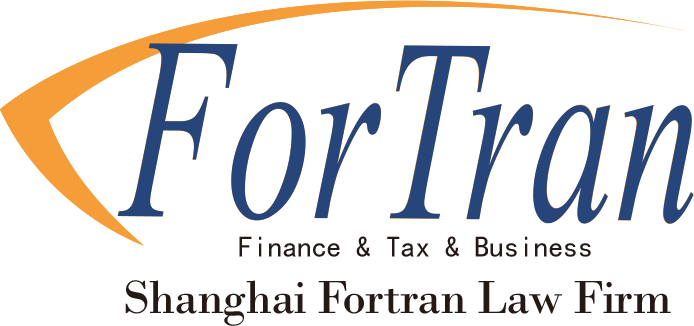The Supreme People’s Court’s South Mountain decision marks a pivotal shift in China’s approach to directors’ duty of diligence. Moving from joint liability to fault-based proportional responsibility, the ruling aligns with the Company Law (2023 Revision) and offers critical guidance for boards on capital verification and compliance management in corporate governance.
Authored by Cassie Chen
On January 6, 2025, the Supreme People’s Court rendered its final judgment in South Mountain Microsystems (Shenzhen) Co., Ltd. (“South Mountain”), bringing an end to a decade-long legal dispute. The Court accepted the protest filed by the Supreme People’s Procuratorate and modified the six directors’ joint and several liability to fault-based proportional liability. This shift marked a significant milestone in China’s evolving approach to corporate governance.
Originating in 2013 with the Shenzhen Intermediate People’s Court’s acceptance of South Mountain’s bankruptcy petition, the case revolved around whether directors should bear joint liability for its sole shareholder’s unpaid capital contribution of approximately USD 5 million. After multiple rounds of litigation—including first instance, appeal, retrial, procuratorial protest, and a subsequent re-adjudication by the Supreme People’s Court—the Court ultimately ruled that directors’ liability should correspond to their degree of fault, overturning earlier decisions that had effectively made directors “jointly responsible” for shareholders’ funding obligation.
In the first year following the implementation of the Company Law of the People’s Republic of China (2023 Revision), this case stands as a landmark for clarifying the judicial standards applicable to directors’ duty to make a call on unpaid capital. It reflects China’s transition toward a more refined and equitable framework of corporate governance.
I. Case Background and Judicial Evolution
South Mountain Microsystems (Shenzhen) Co., Ltd. (“South Mountain”) was established in January 2005 as a wholly foreign-owned enterprise by South Mountain Technologies, Ltd. (“Cayman South Mountain”). The registered capital was USD 16 million, with USD 3 million to be paid within 90 days of incorporation and the remaining USD 13 million within one year thereafter. By November 2005, the shareholder had only partially paid its capital, leaving over USD 5 million outstanding. As the television industry shifted from cathode-ray tubes to flat-panel display technologies, the rear-projection TV market contracted, prompting the shareholder to cease further capital contributions.
In June 2013, the company entered bankruptcy proceedings. The bankruptcy administrator discovered the shareholder’s unpaid capital contribution and in January 2015 sued six directors, alleging that they had failed to exercise due diligence in calling for the unpaid capital and should therefore bear joint and several liability for the company’s losses.
The case underwent multiple reversals. The trial and appellate courts rejected the administrator’s claims, holding that the directors’ failure to act had no direct causal link to the losses. However, in 2019 the Supreme People’s Court, upon retrial, imposed joint and several liability on all six directors—a decision that sparked heated debate within the legal community. The directors subsequently petitioned for supervisory review. In March 2021, the Supreme People’s Procuratorate held a public hearing and later filed a protest.
In its final judgment in January 2025, the Supreme People’s Court accepted the Procuratorate’s protest and ruled that only the three directors from the first board of directors were to bear 10% joint compensation liability, while the other three, who had served on the second board, were exempted.
II. Legal Boundaries of Directors’ Duty of Diligence and Determination of Liability
1. Nature of the Duty to Make a Call on Unpaid Capital
Directors’ duty to make a call on unpaid capital arises from Article 180(2) of the Company Law of the People’s Republic of China (2018 Revision), formerly Article 147(1) of the 2005 version, which imposes on directors, supervisors, and senior management the duty of diligence—to exercise reasonable care and act in the best interests of the company. Under the Company Law of People’s Republic of China (2023 Revision), this has been further elaborated in Article 51 as the duty to verify and call for capital contributions.
This duty carries both managerial and ancillary characteristics. On one hand, it reflects the board’s responsibility for capital maintenance; on the other, it serves to ensure the shareholder fulfills its own contribution obligationsrather than having the board assume the shareholder’s liability.
Importantly, the duty to make a call is not absolute. Its fulfillment depends on its practical feasibility. In the South Mountain case, members of the second board served at a time when the shareholder had expressly decided to cease investment. As their efforts could not have altered that commercial decision, the Court found no liability on their part.
2. Key Factors in Determining Directors’ Liability
The Supreme People’s Court’s decision established three key factors for determining directors’ liability:
Degree of fault: Whether the director failed to act intentionally, with gross negligence, or with ordinary negligence. The first board’s failure to take any collection measures after the payment deadline constituted ordinary negligence.
Causation: A legal causal relationship must exist between the director’s failure to act and the company’s loss. The second board’s inaction did not cause the loss, as the shareholder had expressly decided to cease investment.
Proportionality: Liability should correspond to the director’s fault and the degree to which their conduct contributed to the loss, rather than imposing blanket joint and several liability.
3. Refined Standards of Directors’ Liability under the Company Law of the People’s Republic of China (2023 Revision)
Article 51(2) of the Company Law of the People’s Republic of China (2023 Revision) provides that directors who fail to fulfill their obligation to verify and call for capital contributions and thereby cause loss to the company shall bear liability for damages rather than joint and several liability. The provision clarifies that only directors found to be at fault shall be held liable, thereby distinguishing responsible directors from those without fault and underscoring that liability must be predicated on fault.
This statutory approach aligns closely with the Supreme People’s Court’s reasoning in the South Mountain case. The original retrial judgment had treated the directors’ failure to act as a joint tort with the shareholder’s non-payment. The Procuratorate, however, emphasized that courts must distinguish between “failure to act where capable” and “non-action where incapable.” The three directors assumed office after the shareholder had made clear its decision not to make further capital contributions. Even with diligent efforts, they could not have changed the outcome. Imposing joint and several liability on them would have gone beyond the reasonable scope of their duty of diligence.
By confirming proportional compensatory liability, the Company Law (2023 Revision) embodies a more nuanced understanding of directors’ duties—linking liability to fault rather than the mere occurrence of loss, and clarifying that directors who have exercised reasonable diligence should not be held liable for unavoidable losses.
III. Practical Implications for Corporate Governance
The South Mountain case provides valuable guidance for boards seeking to strengthen compliance and capital management practices.
To ensure the effectiveness of shareholders’ capital contributions, boards should establish a systematic mechanism for verifying and calling for capital contributions throughout the company’s life cycle and addressing potential deficiencies such as failure to pay capital contribution when due, false or fictitious capital contribution, and unauthorized withdrawal of capital. Specifically:
Before payment deadlines: Boards should monitor shareholders’ funding preparations and issue timely reminders.
After deadlines: Boards should formally deliberate and issue written notices specifying the outstanding amount, a grace period (no less than 60 days), and the consequences of nonpayment.
For false capital contributions or unauthorized withdrawal of capital: Boards should document verification processes through written communications or meeting minutes and, where necessary, initiate legal action.
If a shareholder still fails to contribute after the grace period, the board may, pursuant to Article 52 of the Company Law (2023 Revision), issue a resolution of forfeiture, resulting in the shareholder’s loss of equity corresponding to the unpaid amount. It is critical to distinguish this from the shareholder expulsion mechanism, which requires a shareholders’ resolution and applies to more severe circumstances involving total nonpayment of capital or complete and unauthorized withdrawal of contributed capital. Throughout the process, directors must adhere to the principle of maximizing the company’s interest and evaluate the shareholder’s financial capacity and intent with prudence to avoid new liabilities arising from mechanical or excessive enforcement.
Most critically, boards should retain comprehensive evidence of due performance, including board resolutions, meeting minutes, capital call notices, and correspondence. In the South Mountain case, one of the key reasons the first board was found liable was its failure to produce any documentary evidence showing that it had fulfilled its duty to make a call. Complete and contemporaneous records are thus not only the basis for determining liability after the fact but also a safeguard against unwarranted personal exposure.
By implementing the above measures, companies can effectively ensure that shareholders fulfill their capital contribution obligations, prevent capital withdrawal or other improper practices, and maintain the adequacy and integrity of corporate capital. These measures not only help directors mitigate personal liability risks, but also enhance overall corporate governance and compliance standards.



